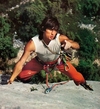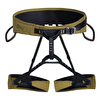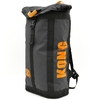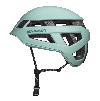Alpinism and caving: underground ice climbing at Brezno pod Velbom
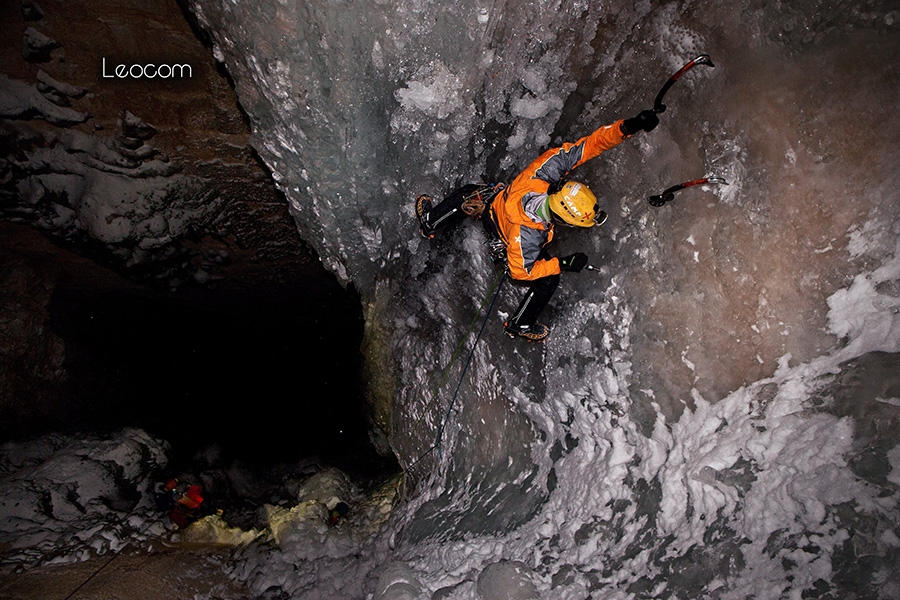
 1 / 10
1 / 10 Leonardo Comelli
Leonardo Comelli
Albert Camus is believed to have once said that cavers "strive to reach [the depths of a cave], at risk of getting their neck's stuck in a narrow cleft, this seems to me [ ...] an undertaking for the perverted or traumatised. "
Who knows how Camus would have answered Alberto Dal Maso, nicknamed Kraft, had he been in my shoes and heard Alberto talk about his project of climbing the long sliver of ice inside a dark cave on the Slovenian side of Mount Kanin.
The grotto is called Brezno pod Valbom, the entrance is located at 2050m above sea level and it drops 910 meters down in the mountain’s belly. It’s deep, definitely, but it’s certainly not a record; what is a record though is the size of the first chamber which, 501 meters large, is up there among some of the biggest in the world. And if that doesn’t suffice, I’ll mention the fact that this immense cavity is lined by an almost continuous strip of ice, which clings to its walls from -50m down to -350m.
An undertaking of this sort involves the use of caving techniques. So, step one: transport 500 meters of ropes to the entrance, which is hardly around the corner... Endless walks from Bovec across the plateau are all part of the game:6 hours breaking through the snow, loaded down with backbreaking rucksacks, is a good approach time.
After two forays to transport gear and equip the cave, finally on 21 March we were ready to climb. There were only four of us: I was going to climb, while Alberto was going to jumar up the fixed ropes I’d anchor to the belays. Leonardo Comelli would document the climb with his camera, while young Sara Segantin was in charge of lighting, since this was one of her first times caving.
Outside, on the plateau, the temperatures were very low; inside the ice was a transparency I’d never seen before, and felt as consistent as glass. I managed to climb the first four pitches, breaching difficulties up to WI5+, but unfortunately we were then forced to retreat.
We return a month later, on April 24, more of us and more determined. This time the first ascent team is joined by climbers from Brescia: my friend Andrea Tocchini (nicknamed Anello) and Matteo Pota Rivadossi. Matteo really needs no introduction and he’d already been here at Velb in 2005 and had imagined the climb, but poor conditions had forced him to abandon his attempt: simply too dangerous. But today things are quite different and the ice graciously accepts out ice axes. Rivadossi and I swing leads, but he tackles the most demanding pitches, with irrepressible gusto, pace and determination.
The end result is a 280m new route, with difficulties up to WI6/M5. Which makes it one of the longest and most continuous ice climbs in the Eastern Alps.
When we reached the end of the drip, Rivadossi suggested he toprope the section that led to the cave’s exit. This tuned out to be an enticing and delicate dry tooling pitch, graded M7+. A dozen bolts would be needed to lead this pitch safely instead of toproping it.
The ascent of this icefall was the result of a collective effort from Trieste-Slovenia-Holland and Italy’s Carnia-Belluno-Trentino-Brescia. As such, it’s a good representation of typical caving outing. For caving, unlike alpinism, is above all a team effort where what counts above all isn’t the individual performance, but organization and sharing. Our group proved to be very close-knit: moral was always high, no obstacles stood in our way! What remains therefore is above all the memory of an unforgettable experience from the human point of view.
I would like to thanks all those I’ve mentioned already, and in particular the organiser Alberto for his tireless determination. A sincere thanks to all those who shared previous advice and helped transport the equipment, gear and the wine from Bovec all the way to Jamarski Bivak: Rok Stopar, Roald Roli Bruil, Andrea Cantone, Matteo Bevilacqua, Dejan Ristič, Matjaž Zetko. And I’d also like to thank photographer and cameraman Leonardo Comelli who, with his artist’s touch, has enabled us to take home more than just a simple recollection. Last but not least, a heartfelt thanks to the Trieste caving club Gruppo Grotte XXX Ottobre for the static ropes and anchors.
Luca thanks SCARPA
Matteo thanks Camp Cassin and Montura.
| Expo.Planetmountain | |
| C.A.M.P. | |
| S.C.A.R.P.A. | |
| www | |
| FB Luca Vallata | |



 Copia link
Copia link

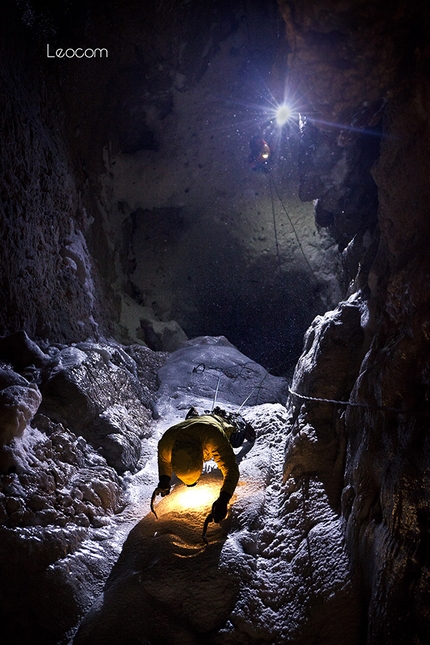
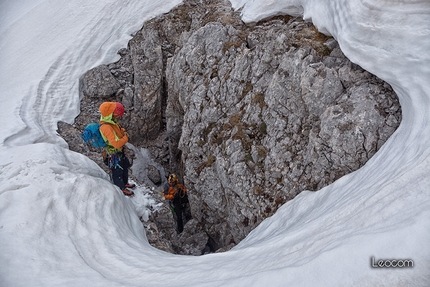
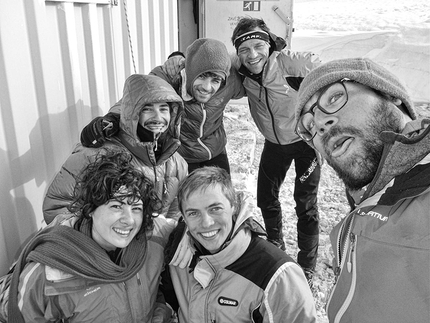
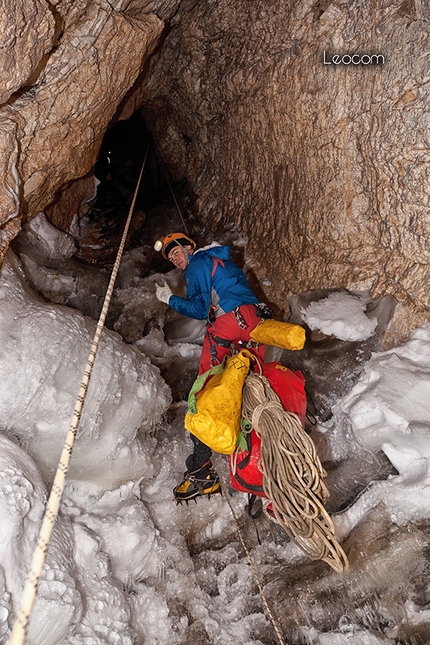
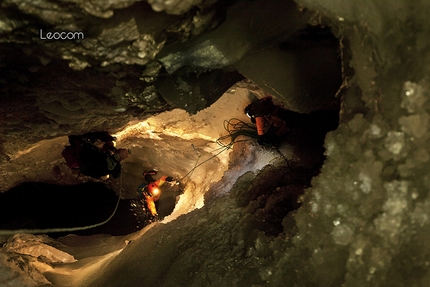
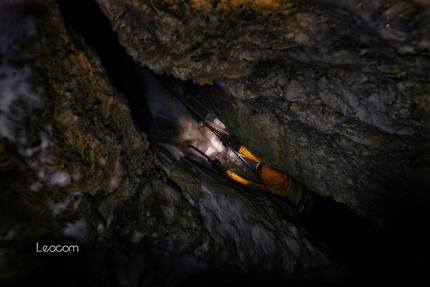
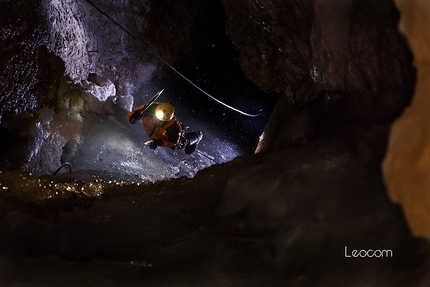
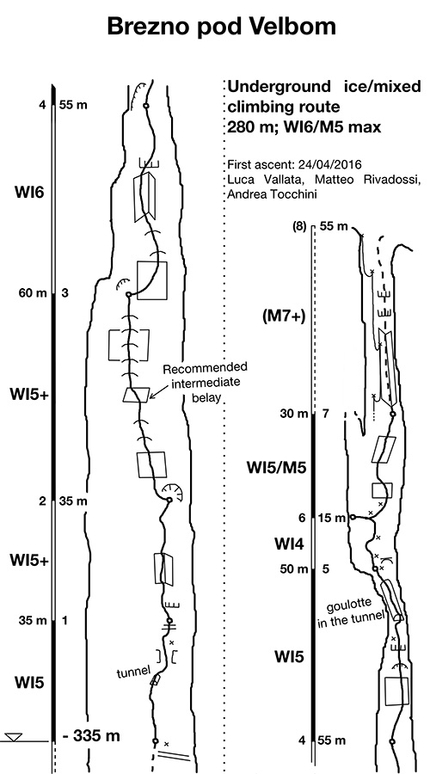
 See all photos
See all photos


